-
 Bitcoin
Bitcoin $82,099.5826
-1.34% -
 Ethereum
Ethereum $1,817.9545
-1.07% -
 Tether USDt
Tether USDt $0.9999
0.02% -
 XRP
XRP $2.0815
-3.96% -
 BNB
BNB $595.8647
-1.53% -
 Solana
Solana $124.0327
-0.92% -
 USDC
USDC $1.0000
0.01% -
 Dogecoin
Dogecoin $0.1634
-3.94% -
 Cardano
Cardano $0.6445
-4.65% -
 TRON
TRON $0.2336
1.34% -
 Toncoin
Toncoin $3.9381
2.61% -
 Chainlink
Chainlink $13.2201
-3.75% -
 UNUS SED LEO
UNUS SED LEO $9.0947
-5.84% -
 Stellar
Stellar $0.2646
-1.90% -
 Avalanche
Avalanche $18.6234
-3.91% -
 Shiba Inu
Shiba Inu $0.0...01214
-3.88% -
 Sui
Sui $2.2126
-6.78% -
 Hedera
Hedera $0.1604
-6.61% -
 Polkadot
Polkadot $4.0237
-1.97% -
 Litecoin
Litecoin $82.1655
-4.48% -
 MANTRA
MANTRA $6.2849
-1.13% -
 Bitcoin Cash
Bitcoin Cash $298.8203
-2.66% -
 Dai
Dai $1.0000
0.02% -
 Bitget Token
Bitget Token $4.4293
-4.57% -
 Ethena USDe
Ethena USDe $1.0000
0.01% -
 Pi
Pi $0.6976
-9.77% -
 Hyperliquid
Hyperliquid $12.5853
-0.74% -
 Monero
Monero $215.4717
-0.22% -
 Uniswap
Uniswap $5.8825
-1.85% -
 Aptos
Aptos $5.1958
-2.29%
How to identify and avoid mining scams?
Beware of crypto mining scams promising easy riches; they often involve fake cloud operations or malware disguised as mining software. Always research thoroughly before investing.
Mar 29, 2025 at 04:42 am
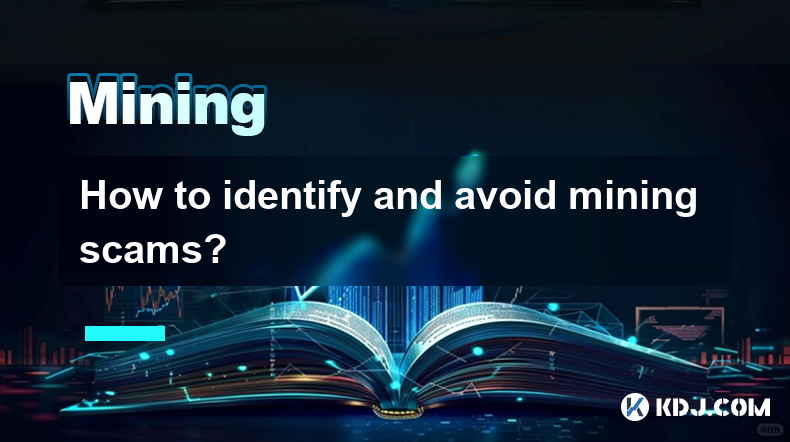
Understanding Cryptocurrency Mining Scams
Cryptocurrency mining, the process of verifying and adding transactions to a blockchain, is often misunderstood. This leads to many falling prey to scams promising easy riches. These scams exploit the allure of passive income and a lack of technical understanding. They often target individuals seeking to profit from the rising value of cryptocurrencies without the technical expertise required for legitimate mining. Understanding the fundamentals of mining is the first step in avoiding these traps.
Common Types of Cryptocurrency Mining Scams
Several types of mining scams exist, each employing different tactics to defraud victims. One prevalent type involves fake cloud mining operations. These operations promise high returns with minimal investment, often requiring upfront payments for "hashing power." They rarely, if ever, deliver on their promises, disappearing with the invested funds. Another common scam involves malware disguised as mining software. This malware secretly uses your computer's resources for illicit mining, often without your knowledge, slowing down your system and potentially damaging it.
Identifying Red Flags in Cryptocurrency Mining Schemes
Several warning signs should raise suspicion about a potential mining scam. Unrealistic return promises are a major red flag. Legitimate mining operations offer modest returns, considering the energy costs and hardware involved. High upfront costs with little transparency about how the funds are used should also be viewed with skepticism. Legitimate operations usually have detailed information readily available. Lack of regulation or licensing is another crucial indicator. Reputable mining operations will often be registered and comply with relevant regulations. Finally, pressure tactics to invest quickly without proper due diligence are a significant warning sign.
How to Protect Yourself from Cryptocurrency Mining Scams
Protecting yourself from these scams requires vigilance and a healthy dose of skepticism. Thoroughly research any mining operation before investing. Look for reviews, independent verification, and evidence of past performance. Avoid any operation that promises guaranteed returns or unusually high profits. Remember that mining is inherently risky, and no investment guarantees success. Never share your private keys or seed phrases with any third party, as this grants them complete control over your cryptocurrency holdings. Only use reputable and well-established mining pools or hardware providers.
Step-by-Step Guide to Avoiding Mining Scams
Verify the legitimacy of the company: Check for reviews, testimonials, and independent verification of their operations. Don't rely solely on the company's own marketing materials.
Analyze the terms and conditions: Carefully read all contracts and agreements before investing any funds. Look for hidden fees, unrealistic promises, and unclear terms.
Check for transparency: Reputable companies will openly share information about their operations, hardware, and energy consumption. Avoid those that are secretive or vague.
Assess the technical aspects: If you lack technical expertise, seek advice from someone knowledgeable in cryptocurrency mining. Understand the hardware, software, and energy requirements involved.
Beware of unsolicited offers: Be wary of emails, social media messages, or online advertisements promising easy money from cryptocurrency mining. These are often scams.
Understanding Legitimate Mining Operations
Legitimate mining operations require significant upfront investment in specialized hardware (ASIC miners for Bitcoin, GPUs for others), substantial electricity costs, and technical expertise for maintenance and troubleshooting. They typically involve joining a mining pool to share resources and increase the chances of successfully mining a block. Returns are dependent on many factors, including the cryptocurrency's price, network difficulty, and the efficiency of the mining hardware. Understanding these factors is crucial to separating legitimate operations from fraudulent schemes.
The Importance of Due Diligence
Due diligence is paramount when considering any cryptocurrency investment, especially mining. This involves thorough research, verification of claims, and careful consideration of the risks involved. Don't rush into investments based on promises alone. Take your time, gather information from multiple sources, and seek advice from trusted experts before committing any funds. Remember, if something sounds too good to be true, it probably is.
Recognizing and Reporting Scams
If you suspect you've encountered a cryptocurrency mining scam, report it to the appropriate authorities. This may include your local law enforcement, the relevant financial regulatory bodies, and the cryptocurrency exchange or platform where you interacted with the scammers. Gathering evidence such as communication records, transaction details, and website information will be crucial in assisting investigations. Warning others about the scam can also help prevent others from falling victim.
Frequently Asked Questions
Q: Are all cloud mining operations scams?
A: No, but many are. Thorough research and due diligence are essential before investing in any cloud mining operation. Look for established companies with transparent operations and verifiable track records.
Q: How can I tell if mining software is legitimate?
A: Download software only from official websites or trusted sources. Check for reviews and security certifications. Be wary of software that requires excessive permissions or consumes an unusually large amount of system resources.
Q: What should I do if I think I've been scammed?
A: Immediately cease all communication with the scammers. Gather evidence of the scam and report it to the appropriate authorities. Consult with a legal professional for advice on recovering any lost funds. Consider changing your passwords and security settings to prevent further damage.
Q: Is it possible to profitably mine cryptocurrency at home?
A: Profitability depends on several factors, including the cryptocurrency's price, electricity costs, and the efficiency of your mining hardware. For most individuals, home mining is unlikely to be profitable, especially for popular cryptocurrencies like Bitcoin. The energy consumption often outweighs the potential profits.
Disclaimer:info@kdj.com
The information provided is not trading advice. kdj.com does not assume any responsibility for any investments made based on the information provided in this article. Cryptocurrencies are highly volatile and it is highly recommended that you invest with caution after thorough research!
If you believe that the content used on this website infringes your copyright, please contact us immediately (info@kdj.com) and we will delete it promptly.
- CZ Announces Plan to Donate 500 BNB Each to Myanmar and Thailand
- 2025-03-31 20:00:12
- Bitcoin (BTC -2.46%) has earned a place in almost every investor's portfolio.
- 2025-03-31 20:00:12
- Bitcoin (BTC) ETF Witnessed a Major Shift as Investors Pulled out $93 Million
- 2025-03-31 19:55:12
- Nigeria Accuses Binance of Facilitating Terrorism and Kidnapping Financing
- 2025-03-31 19:55:12
- A Sentiment Shift Appears Underway Within the XRP Community
- 2025-03-31 19:50:12
- A Quarter of S&P 500 Firms Could Be Holding Bitcoin on Their Balance Sheets by 2030: Report
- 2025-03-31 19:50:12
Related knowledge
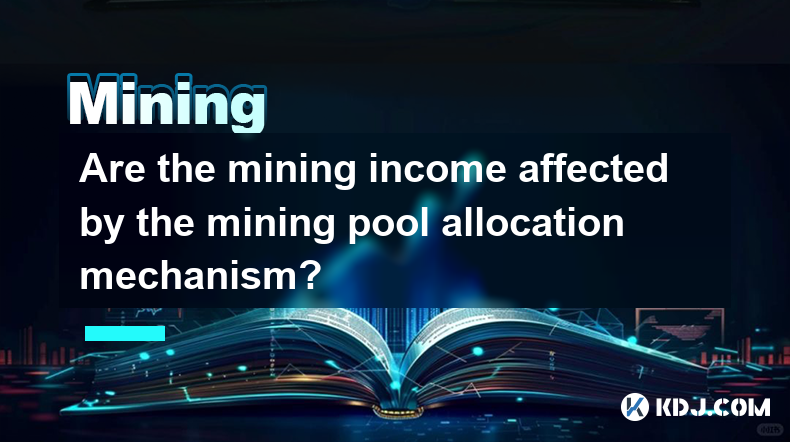
Are the mining income affected by the mining pool allocation mechanism?
Mar 31,2025 at 05:49pm
Understanding Mining Pool Allocation MechanismsMining pools aggregate the hashing power of many miners to increase the chances of successfully mining a block. The reward for successfully mining a block is then distributed among the pool's participants based on their contribution – usually measured in shares submitted. The allocation mechanism determine...
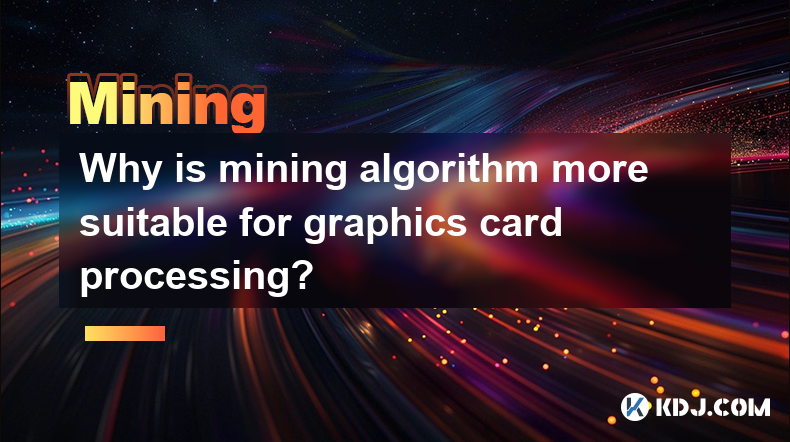
Why is mining algorithm more suitable for graphics card processing?
Mar 31,2025 at 05:28pm
The Parallel Processing Power of GPUs in Cryptocurrency MiningThe core reason why many cryptocurrency mining algorithms are more suitable for graphics card (GPU) processing lies in their inherent architecture. GPUs are designed for parallel processing, handling many calculations simultaneously. This contrasts with CPUs, which excel at sequential proces...
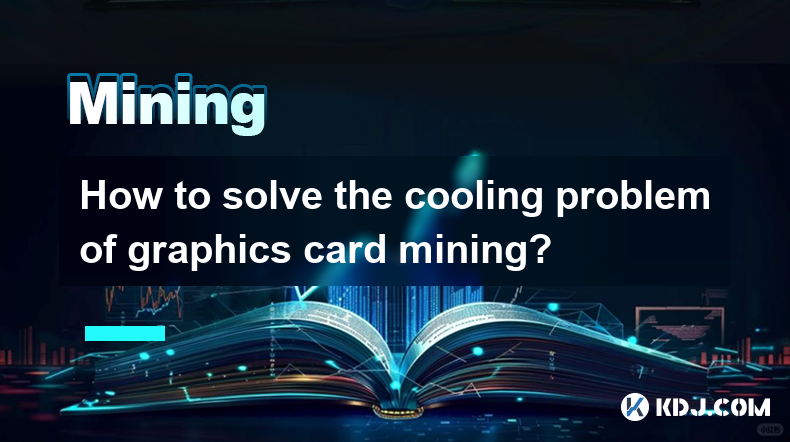
How to solve the cooling problem of graphics card mining?
Mar 31,2025 at 02:35pm
Understanding GPU Cooling in Cryptocurrency MiningGraphics cards (GPUs) generate significant heat during cryptocurrency mining, demanding efficient cooling solutions to prevent damage and maintain optimal performance. Overheating can lead to reduced hash rates, instability, and even permanent hardware failure. This necessitates a proactive approach to ...
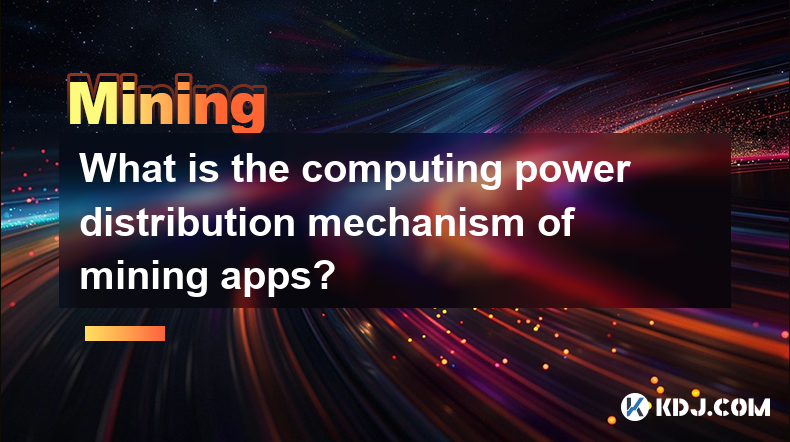
What is the computing power distribution mechanism of mining apps?
Mar 31,2025 at 03:56pm
Understanding Hashrate Distribution in Mining AppsMining apps, used to participate in the Proof-of-Work (PoW) consensus mechanism of cryptocurrencies like Bitcoin, rely on a distributed network of miners contributing computing power. This power, measured in hashes per second (hashrate), isn't evenly distributed. Understanding how it's allocated is cruc...
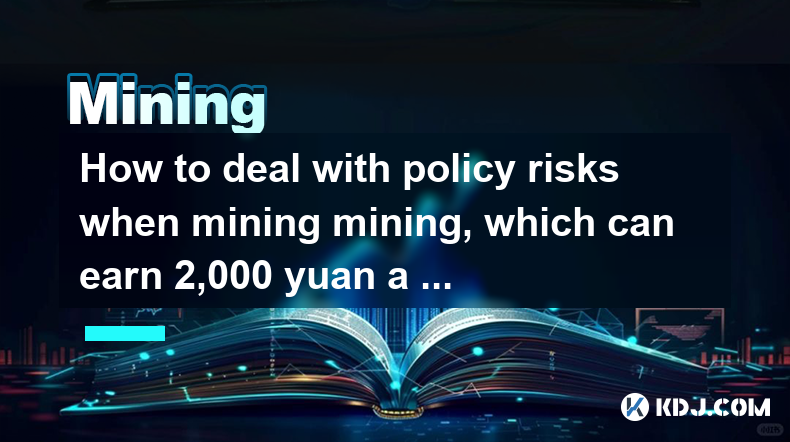
How to deal with policy risks when mining mining, which can earn 2,000 yuan a day?
Mar 31,2025 at 05:00pm
How to Deal with Policy Risks When Mining, Aiming for 2,000 Yuan Daily Profit? Understanding the Volatility of Cryptocurrency MiningMining cryptocurrencies, with the goal of a 2,000 yuan daily profit, is incredibly ambitious and inherently risky. This ambition hinges heavily on several factors, including the chosen cryptocurrency, the hash rate of your ...
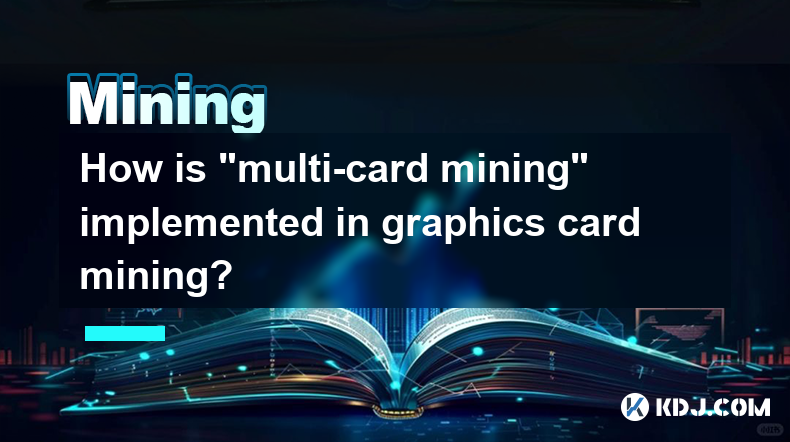
How is "multi-card mining" implemented in graphics card mining?
Mar 31,2025 at 07:49pm
Understanding Multi-Card Mining SetupMulti-card mining, in the context of cryptocurrency mining using graphics cards (GPUs), refers to the practice of using multiple GPUs simultaneously to increase the overall hashing power and thus, the chances of successfully mining a block and earning cryptocurrency rewards. This is significantly more efficient than...

Are the mining income affected by the mining pool allocation mechanism?
Mar 31,2025 at 05:49pm
Understanding Mining Pool Allocation MechanismsMining pools aggregate the hashing power of many miners to increase the chances of successfully mining a block. The reward for successfully mining a block is then distributed among the pool's participants based on their contribution – usually measured in shares submitted. The allocation mechanism determine...

Why is mining algorithm more suitable for graphics card processing?
Mar 31,2025 at 05:28pm
The Parallel Processing Power of GPUs in Cryptocurrency MiningThe core reason why many cryptocurrency mining algorithms are more suitable for graphics card (GPU) processing lies in their inherent architecture. GPUs are designed for parallel processing, handling many calculations simultaneously. This contrasts with CPUs, which excel at sequential proces...

How to solve the cooling problem of graphics card mining?
Mar 31,2025 at 02:35pm
Understanding GPU Cooling in Cryptocurrency MiningGraphics cards (GPUs) generate significant heat during cryptocurrency mining, demanding efficient cooling solutions to prevent damage and maintain optimal performance. Overheating can lead to reduced hash rates, instability, and even permanent hardware failure. This necessitates a proactive approach to ...

What is the computing power distribution mechanism of mining apps?
Mar 31,2025 at 03:56pm
Understanding Hashrate Distribution in Mining AppsMining apps, used to participate in the Proof-of-Work (PoW) consensus mechanism of cryptocurrencies like Bitcoin, rely on a distributed network of miners contributing computing power. This power, measured in hashes per second (hashrate), isn't evenly distributed. Understanding how it's allocated is cruc...

How to deal with policy risks when mining mining, which can earn 2,000 yuan a day?
Mar 31,2025 at 05:00pm
How to Deal with Policy Risks When Mining, Aiming for 2,000 Yuan Daily Profit? Understanding the Volatility of Cryptocurrency MiningMining cryptocurrencies, with the goal of a 2,000 yuan daily profit, is incredibly ambitious and inherently risky. This ambition hinges heavily on several factors, including the chosen cryptocurrency, the hash rate of your ...

How is "multi-card mining" implemented in graphics card mining?
Mar 31,2025 at 07:49pm
Understanding Multi-Card Mining SetupMulti-card mining, in the context of cryptocurrency mining using graphics cards (GPUs), refers to the practice of using multiple GPUs simultaneously to increase the overall hashing power and thus, the chances of successfully mining a block and earning cryptocurrency rewards. This is significantly more efficient than...
See all articles






















































































